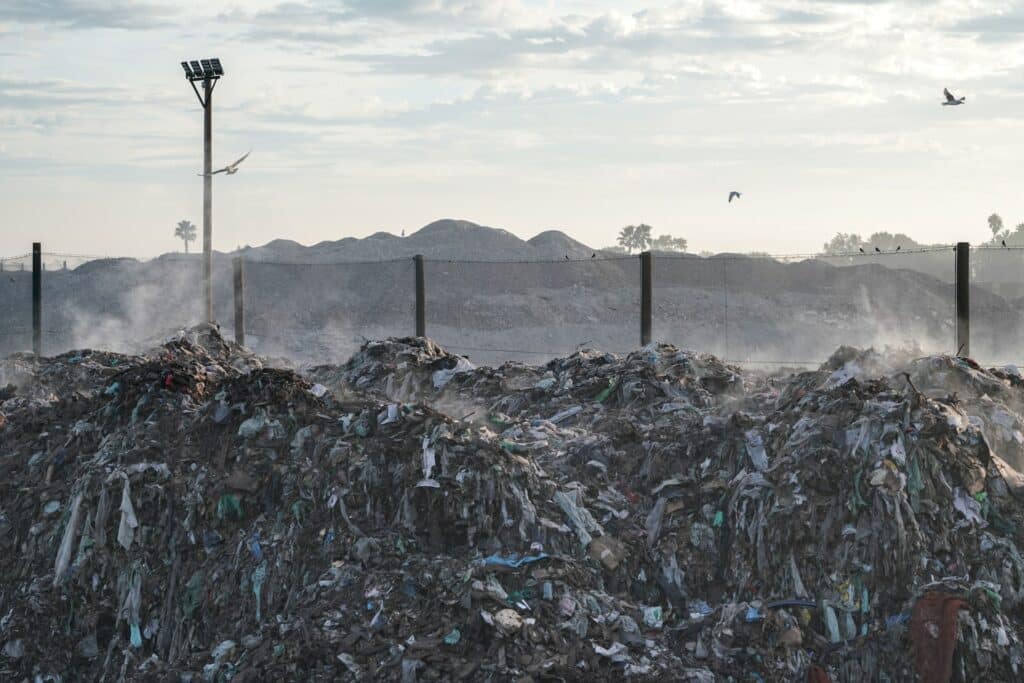
Last Friday a paper was released that again showed that methane leaks in North America may be greater than previously estimated. The result was another round of debate as to whether natural gas is a suitable ‘bridge fuel’ to a sustainable future. A debate which is pretty heating in the US due to fracking.
I’ve written previously as to why natural gas is a poor bridge fuel purely in terms of carbon dioxide, but not really dealt with the methane issue. Reading some of the better commentary on this new paper reminded me that people have a tendency to look at methane in a kind of micro context, purely looking at lifecycle analyses or global warming potentials, or whether methane is renewable vs non-renewable.
This kind of approach is useful for comparing the climate impact of natural gas and other fossil fuels but misses the global context needed to grasp the near term and long term importance of methane emissions. This relative importance is almost universally overlooked when people discuss methane, so in today’s post I’m going to dig into it as best I can.
Why all the interest in methane?
In recent years there has been a lot of literature showing that methane emissions inventories are underestimated. The latest paper adds more evidence to concerns methane leaks from natural gas systems are considerable. In the US where fracking is an emotive issue this kind of work is a hot topic.
Beside this, in its recent report the IPCC increased its Global Warming Potential (GWP) estimates for Methane to 28 more potent than CO2 over 100 years, and 84 times more potent over 20 years (a little more including feedbacks). This means that methane is considered an even more potent greenhouse gas now than it was in the past.
The fact that methane stays in the atmosphere for an average of just twelve years makes its relative climate importance pretty damn confusing. It means that reducing human methane emissions could be an important climate lever in the near term, but has limited potential in the long term. This post is about understanding these two realities properly.
Warming Influences since 1979

Since 1979 NOAA’s has kept data which allows us to compare the warming influence of long lived greenhouse gases in its Greenhouse Gas Index. Using the measurements of the atmospheric concentrations of each gas NOAA is able to estimate the annual changes in warming influence for each of the major long lived greenhouse gases.
If we look purely at the change in warming influence, what is known as radiative forcing, since 1979 we can compare which of the major greenhouse gases are playing the largest role in warming the planet over the last three decades.
In the graph below I show the change in Global Radiative Forcing (W m-2) since 1979 for carbon dioxide, methane, nitrous oxide, CFCs and the 15 minor gases based on NOAA data.
Since 1979 the growth in direct warming influence of carbon dioxide has been 9.3 times greater than it has been for methane. In fact the growth in direct warming influence from CO2 has been 2.4 times greater than from all other greenhouse gases combined. Methane does have some additional warming effect due to its effect on tropospheric ozone, but the shape of this graph gives you a pretty clear idea of what the main problem is.
The relative importance of carbon dioxide in recent times compared to the other greenhouse gases reflects two very basic fundamentals. We are spewing an awful lot of it into the atmosphere and some of its stays up there a very long time. The atmospheric life of methane is about 12 years whereas for CO2 a third will still be in the atmosphere after 100 years, and 19% still there after 1000 years.
After being stable for 8 years the atmospheric concentration of methane began to grow again in 2007. Due to an incomplete understanding of the global methane budget the drivers for this change are exactly clear. What we do know is that the direct warming influence from the increase in methane concentrations since 2007 is just one thirteenth of what it is for rising carbon dioxide concentrations.
What will force future warming?
The long atmospheric lifetime of carbon dioxide and the challenge of cutting carbon emissions are the main reasons why carbon dioxide is expected to be the dominant warming influence through 2100.
The following chart comes from the depths of the IPCCs report. It shows which greenhouse gases play the dominant role in each of its representative concentration pathways (RCP) to 2100.
In every one of the IPCCs representative concentration pathways carbon dioxide is expected to be responsible for more than 80% of warming influence in 2100. In the case of the radical mitigation pathway (RCP 2.6) it is over 90% while for the runaway emissions pathway (RCP 8.5) it is above 80%.
How important is methane?
When you look the changes in warming influence over the past thirty years, and at future pathways, it is tempting to think that methane is pretty irrelevant in the bigger scheme of things and that we should focus purely on carbon dioxide. This is a mistake.
In fact the thing that makes methane less relevant in the long term, its short atmospheric lifetime, makes it especially important over the next few decades. James Hansen summed it up well in a 2007 paper:
Non-CO2 climate forcing’s are important, despite the fact that CO2 is the largest human-made climate forcing. Indeed, expected difficulties in slowing the growth rate of CO2 and eventually stabilizing atmospheric CO2 amount make the non-CO2 forcing’s all the more important. It now appears that only if reduction of the non-CO2 forcing’s is achieved, and CO2 growth is slowed, will it be possible to keep global temperature within or near the range of the warmest interglacial periods.
The most important ‘non-CO2 forcing’s’ for short term climate influence are methane and black carbon (fine particulate carbon). Despite the fact they aren’t nearly as important as carbon dioxide in the long run their mitigation holds significant short term potential as well as promise of health and agricultural benefits.
The best summary I know of for the mitigation potential from black carbon and methane comes from the 2012 paper Simultaneously Mitigating Near-Term Climate Change and Improving Human Health and Food Security. The chart below summarizes its climate findings, and shows how action on black carbon and methane could potentially slow warming over the coming decades.
The findings are pretty simple. They show that aggressive mitigation of methane and black carbon could potentially reduce warming over the next fifty years by as much as 0.5°C, with most of that reduction delivered by 2040.
How much of this methane and black carbon mitigation is practically deliverable is debatable. But at very least this analysis shows us we should care about non-CO2 forcing’s in the short term. Moreover the health and agricultural benefits of both black carbon and methane mitigation make them socially and economically attractive.
So what does all this global context mean for the new estimates of methane leaks in North America?
On one level it is almost good news. Given the modest rises in global methane concentrations in recent years the more methane that is from human sources the greater our potential to address the problem. Then again, North American methane emissions are pretty minimal on a global scale. The majority of global methane mitigation potential resides in the coal mining, oil and gas production and municipal waste sectors in China, Russia and Central Africa.
Keeping our eyes on the carbon prize
In the short term it makes sense to tackle methane and black carbon emissions, because of their potential to affect near term warming. But carbon dioxide is by far the biggest source of warming, it is the fastest growing source of warming and it is the source of warming with the most inertia. Cutting down on fossil fuels is challenged by the many benefits of fossil fuels.
Without immediate and sustained efforts to tackle carbon dioxide emissions we are really just rearranging deck chairs. For some further perspective on methane emissions check out the recent Real Climate post Arctic and American Methane in Context.
Lindsay Wilson
I founded Shrink That Footprint in November 2012, after a long period of research. For many years I have calculated, studied and worked with carbon footprints, and Shrink That Footprint is that interest come to life.
I have an Economics degree from UCL, have previously worked as an energy efficiency analyst at BNEF and continue to work as a strategy consultant at Maneas. I have consulted to numerous clients in energy and finance, as well as the World Economic Forum.
When I’m not crunching carbon footprints you’ll often find me helping my two year old son tend to the tomatoes, salad and peppers growing in our upcycled greenhouse.
